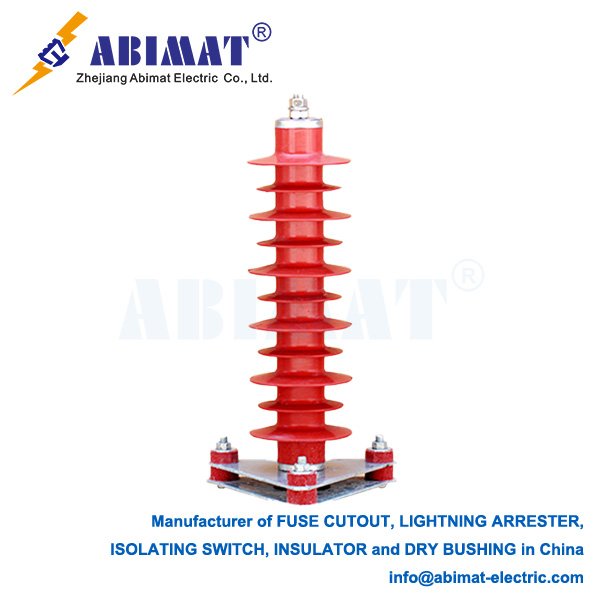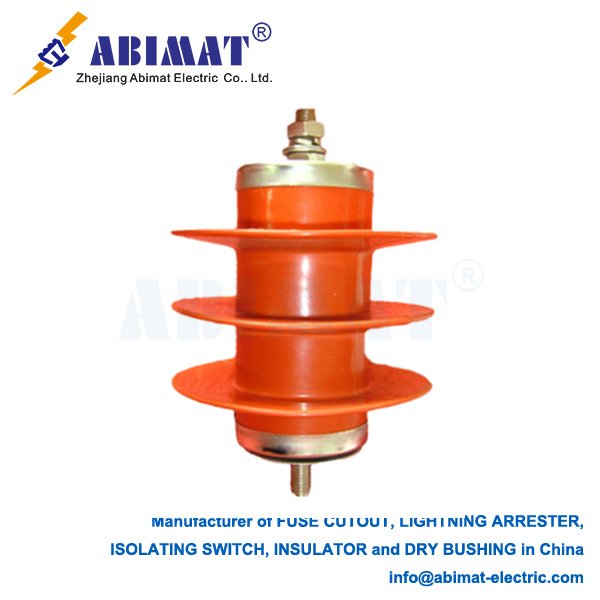Zinc Oxide Surge Arresters: Guardians of Electrical Systems
Surge arresters are indispensable protective devices within electrical power systems, shielding valuable equipment from damaging overvoltages caused by lightning strikes, switching operations, or faults. Among various technologies, the Zinc Oxide (ZnO) surge arrester stands as the modern standard due to its superior performance and reliability.

The ZnO Revolution: Beyond Traditional Gaps
Prior to ZnO, silicon carbide (SiC) arresters dominated. These relied on spark gaps in series with SiC resistor blocks. While functional, they suffered limitations: they required series gaps to isolate the system voltage, exhibited a relatively gradual turn-on characteristic, and needed follow current interruption after discharging a surge. The development of ZnO varistor ceramics in the 1970s revolutionized surge protection.
The Heart: ZnO Varistor Ceramic
The core component is a bulk ceramic material primarily composed of zinc oxide (ZnO) grains (typically >90%), doped with small amounts of other metal oxides (like Bi₂O₃, Sb₂O₃, CoO, MnO). This unique microstructure is key to its properties. The highly conductive ZnO grains are separated by thin, highly resistive intergranular layers rich in the dopant oxides. These grain boundaries form millions of microscopic “back-to-back Zener diodes” within the bulk material.
Highly Nonlinear Voltage-Current Characteristic
This microstructure grants ZnO ceramics an exceptionally nonlinear voltage-current (V-I) characteristic:
Low Leakage Current: At normal system operating voltage, the arrester presents a very high resistance (MΩ range), drawing only microamperes of leakage current. It remains effectively invisible to the system.
Sharp Knee Point & Clamping: When an overvoltage exceeding a critical threshold (the “reference voltage”) occurs, the grain boundaries break down dramatically. Resistance drops sharply by several orders of magnitude within nanoseconds. This allows massive surge current (kA) to be diverted safely to earth, while clamping the voltage appearing across the protected equipment to a predictable, limited level – the protective level.
Instantaneous Recovery: Once the surge passes and voltage returns below the threshold, the grain boundaries instantly regain their high resistance. There is no follow current to interrupt, unlike SiC arresters with gaps.
Key Advantages of ZnO Arresters
I. No Series Gaps: Eliminates issues like sparkover delay, contamination sensitivity, and the need for follow current interruption mechanisms. Simplifies design and enhances reliability.
II. Superior Protection Level: The sharper knee point and lower clamping voltage compared to SiC arresters provide better protection margins for sensitive equipment like transformers and rotating machines.
III. Faster Response: Responds virtually instantaneously (nanoseconds) to steep-fronted surges, offering superior protection against very fast transients (VFTOs).
IV. High Energy Absorption Capacity: Modern ZnO blocks can absorb massive amounts of surge energy per unit volume, allowing compact arrester designs even for high-voltage applications.
V. Excellent Stability: Properly manufactured ZnO varistors exhibit stable characteristics over long service lives under normal operating conditions. Leakage current monitoring provides valuable diagnostic information on aging or contamination.
VI. Wide Application Range: Available for voltages from low-voltage (LV) residential systems to ultra-high-voltage (UHV) transmission lines (exceeding 1000 kV), and for both AC and DC systems.
Applications and Design
ZnO arresters are ubiquitous:
Transmission & Distribution: Protecting substations (transformers, circuit breakers, busbars) and overhead lines.
Rotating Machines: Shielding generators and motors from switching surges and lightning.
Industrial & Commercial Facilities: Safeguarding sensitive process control equipment and building infrastructure.
Renewable Energy: Critical for protecting wind turbine generators and solar inverters.
An arrester assembly typically comprises a column of ZnO varistor blocks stacked electrically in series, housed within a robust, weatherproof enclosure. For higher voltages, the housing provides necessary creepage distance. Designs include porcelain-housed arresters (traditional) and polymeric-housed arresters (lighter weight, superior pollution performance, explosion-safe).
Conclusion
The Abimat electric Zinc Oxide surge arresters represent a fundamental advancement in overvoltage protection technology. Their unique, gap-less design based on highly nonlinear ZnO varistor ceramics provides fast, reliable, and predictable clamping of dangerous overvoltages. With advantages like superior protective levels, high energy handling, inherent stability, and versatility across voltage classes, ZnO arresters are the cornerstone of modern electrical system resilience, safeguarding critical infrastructure and ensuring operational continuity. Continuous material research and design optimization further enhance their performance and reliability for increasingly complex power grids.


